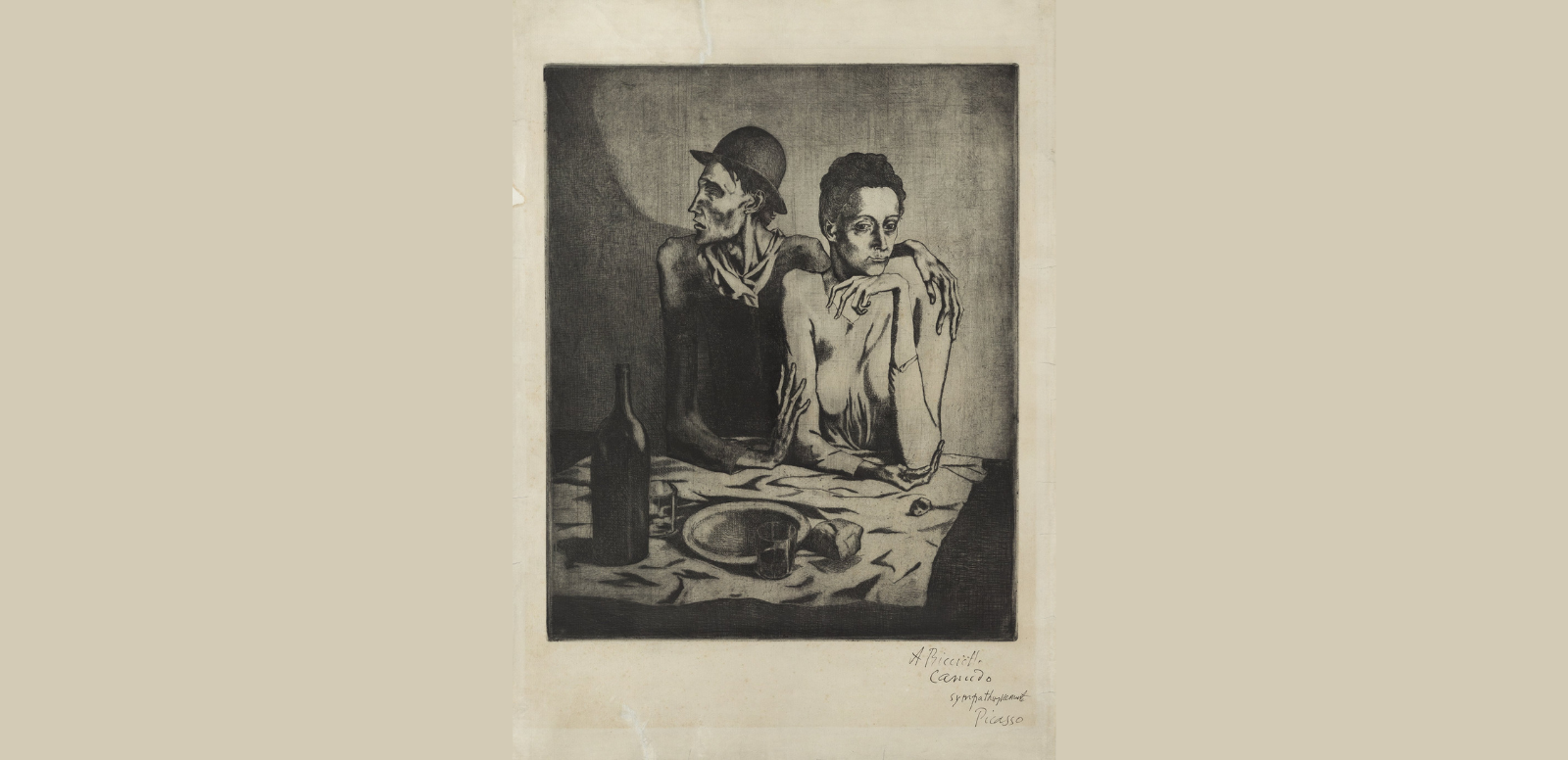
The Frugal Meal is an etching, a type of engraving made using a metal alloy base, in this case a zinc plate, and printed on vergé paper. It was executed in the studio on the Rue Ravignan in Paris, also known as Bateau-Lavoir. The artist was advised by the Catalan painter and engraver Ricard Canals, who taught Picasso the etching technique. This work is one of the artist's first works using the etching technique.
This engraving belongs to the collection called La Suite des Saltimbanques, the first series of engravings made by Picasso. Using the techniques of etching and drypoint, the 15 engravings that make up the collection are surprising for the technical mastery with which the artist produced them in a medium that was practically new to him. The collection was produced between 1904 and 1905, coinciding with the transition between Picasso's blue and pink periods.
As can be seen, in the foreground there are remains of bread and wine on the tablecloth and behind them the couple can be seen united by melancholy and distant. The man embraces the woman and we can see how each is immersed in their own desolation.
Here we can see the artist's interest in humanity, depicting it with poor, socially marginalised characters, passive expressions and figures dejected by their own weight, so characteristic of the early blue period.
Brigitte Baer, a French historian, identifies the print in the Thyssen-Bornemisza collection as one of the thirty copies of the second state of the first print run, most of them with dedications by the painter to his friends.
References:
- Pablo Picasso. The Frugal Meal. 1904. Museo Nacional Thyssen-Bornemisza, Madrid (online: https://www.museothyssen.org/coleccion/artistas/picasso-pablo/comida-frugal).
- Pablo Picasso. The Frugal Meal. 1904. Picasso Museum, Barcelona (online: http://www.bcn.cat/museupicasso/es/coleccion/mpb110-011.html)

